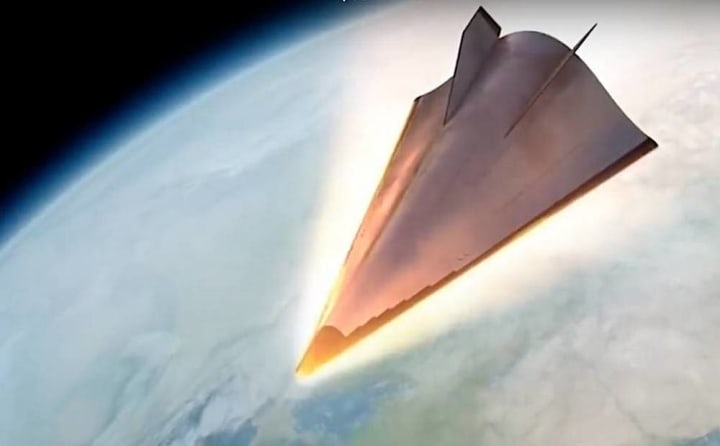AI and Hypersonic Aerial Dogfights
New off-the-wall tactics for hypersonic fighters which don't yet exist and maybe never will

It seems that every day I read that the Chinese claim to have invented something new. They have a bad rep for stealing secrets and it still goes on as part of a huge operation by the Guoanbu (Ministry of State Security).
But, as China has emerged into the bright lights of the early 21st Century they seem to be stealing a march on the rest of the world when it comes to original research and development.
And now they claim to have developed an AI for studying hypersonic aerial dogfights. It seems that the newly developed Chinese AI has come up with some counter-intuitive engagement tactics to defeat an F-35 (which is not hypersonic).
So, the Chinese have simulated the flight characteristics of an F-35 (and presumably the F-35 pilot's engagement tactics).
Hypersonic fighters?
To my knowledge, which is far from complete and not hooked into 'intelligence' circles, hypersonic fighters (rocket or jet propelled) do not yet exist.
However, Lockheed proposed one way back in 2013, except it wasn't a fighter, quite. It was the 'Son of Blackbird', or SR-72:
Unconfirmed reports about the SR-72 date back to 2007, when various sources disclosed that Lockheed Martin was developing an airplane able to fly six times the speed of sound or Mach 6 (4,000 mph; 6,400 km/h; 3,500 kn) for the United States Air Force. Lockheed Martin Skunk Works' development work on the SR-72 was first published by Aviation Week & Space Technology on 1 November 2013. (Wikipedia)
There are several other hypersonic aircraft in design and development, with Russia's Avangard reportedly in production, according to Putin. But even that is rocket-launched unmanned glide vehicle for MIRVs.

And there's one other detail - aerial dogfights in the classic sense are really a thing of the past. But maybe that's just me being picky about language. Fighter aircraft rarely get close enough to engage eye-to-eye these days - it's almost always a stand-off engagement using Sidewinders and Sidewinder rip-offs.
The unexpected fire-solution
Researchers in China say their AI is the first to simulate an aerial battle involving a hypersonic aircraft flying at Mach 11, or 11 times the speed of sound, and the technology came up with a surprising tactic for defeating an enemy.
In the computer simulation, a hypersonic aircraft encountered an enemy fighter jet flying at Mach 1.3, close to the top speed of an F-35.
The hypersonic plane's pilot was then given an order to kill.
Instinct, along with the results of earlier simulations, should have directed the pilot to head straight towards the target.
But the pilot, guided by AI the team developed, flew to an unexpected position far ahead of the enemy aircraft and fired a missile "over the shoulder", tossing it backwards towards the foe.
The missile hit the enemy fighter, which was 30km (18.6 miles) behind the hypersonic plane, at a speed of up to Mach 11, ending the battle in less than eight seconds, according to the computer simulation. - South China Morning Post (ibid.)
The researchers commented: "This shows that when the [hypersonic aircraft] is performing air-to-air missions, it can attack from outside the combat theatre by launching weapons at a long distance in front of the target using over-the-shoulder launch," .
The research team was led by associate professor Liu Yanbin at the Nanjing University of Aeronautics and Astronautics.
Fire control
Although the story mentioned 'crew safety', the focus of the research seemed to be on AI-driven fire-control systems, which have not yet been developed for hypersonic aircraft.
"The application of artificial intelligence technology in the airborne fire-control system can improve the aircraft's situational awareness and the system's offensive and defensive response speed." - research team.
And reduce pilot work overload, as the team pointed out.
Conclusion
It all sounds like something out of a multi-user air combat game to me, but what is interesting is that they are actually thinking along these lines.
It's very likely that within 20 years we will see AI-controlled hypersonic aircraft, and fire control systems will be needed for them. I'm not sure about pilots. So, there may really be some benefit in this 'pie-in-the-sky' research.
The key reason for having hypersonic interceptor aircraft is explained here:
On 13 November 2013, Air Force Chief of Staff General Mark Welsh revealed that the service was interested in the SR-72's hypersonic capabilities, but had not spoken with Lockheed Martin about the aircraft. Its high speed appeals to the service to reduce the time an adversary would have to react to an operation. - Wikipedia (ibid.)
***

About the Creator
James Marinero
I live on a boat and write as I sail slowly around the world. Follow me for a varied story diet: true stories, humor, tech, AI, travel, geopolitics and more. I also write techno thrillers, with six to my name. More of my stories on Medium
Enjoyed the story? Support the Creator.
Subscribe for free to receive all their stories in your feed. You could also pledge your support or give them a one-off tip, letting them know you appreciate their work.






Comments
There are no comments for this story
Be the first to respond and start the conversation.